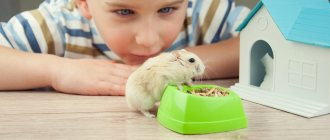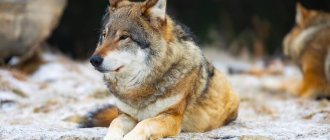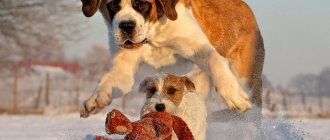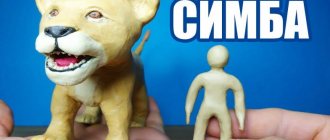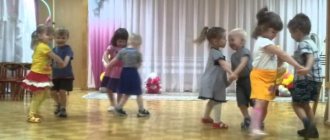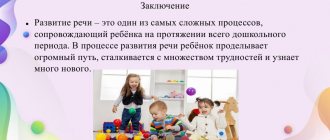Composition options based on theme
Modeling on the theme “Child with a kitten” in the preparatory group is traditionally carried out in November. As an option, you can offer preschoolers to sculpt a puppy instead of a kitten.
Children can do this according to their choice: some will want to create the image of a cat, and others of a dog.
The main thing is that the craft has a storyline: the person and the animal are interconnected with each other, and not just standing side by side on a stand. You can suggest the following composition options to the guys:
- A child strokes a kitten (or puppy).
- A child holds a kitten in his arms.
- The child sits on the floor and shows the kitten a toy.
- The child walks and beckons the kitten to follow him.
The teacher’s task is to suggest to the children possible plots for the craft.
Step-by-step execution of individual compositions
Let's consider the step-by-step creation of images that a child can play with.
Kitten: modeling using the sculptural method
- From a plasticine ball we draw out parts of the kitten’s body: four legs of the same size, a long tail and a large head.
The paws should be the same size and the tail should be long.
- We work on the image: we give the ears a triangular shape, stretch them out, and playfully bend the tail at the end, smoothing out all the irregularities.
We work on the image in more detail, smooth out unevenness
- The final stage is to make the cat’s eyes. To do this, we flatten two small white balls and mark the pupils with black.
The final stage is making the kitten’s eyes
Kitty: modeling using constructive method
- From plasticine of the same color we prepare two large balls and six small ones.
The basis of the work is plasticine balls of two sizes
- From one large ball we form an oval (the body of the cat), from the other we separate a small part and roll out a sausage (tail), the rest will become the head. Four small balls are transformed into paws, the fifth into ears, the sixth into cheeks and nose.
We use balloons to make all the details of the cat’s image.
- We fasten the parts together. To connect the head to the body, we use a match or a toothpick; all other elements are simply pressed and glued to each other. By the way, using matches you can also attach the legs - then they will be movable.
To connect the parts you can use matches, by the way, then the legs will be movable
- We complement the image with green eyes with black pupils and a pink tongue. Cute kitten is ready. We give him some pose, for example, he licks his paw.
We work on the kitten’s face and give it a certain pose
Funny puppy sitting: step-by-step modeling in a constructive way
- The basis of the image will be a large head. We fashion it from a brown ball, add expressive details on top - a white tubercle and a semicircle. We also make small triangular ears separately.
The puppy will have a big head
- We assemble a curious face: we attach ears to the head, a small white spot, black eyes, and add a brown nose. We form the mouth with a stack.
Assembling the face and decorating it using small parts
- Let's move on to the rest of the body. We remember that the head should be larger than the body - this will make the puppy seem cuter and funnier. We make an oval body from white plasticine, white legs (they will be brown at the tips) and a small brown tail.
The dog's body should not be larger than its head
- We collect body parts. We fasten the head and body with a match, simply press the paws and tail to the body. Add brown pads to the bottom of the paws. We give the puppy a touching pose and defiantly hold out its tail.
We give the dog a cute pose and set its tail beautifully
Video: how to make a dog from plasticine
Video: making a cat from plasticine
Motivating start to class
Of course, for any visual activity of preschoolers it is necessary to create motivation. In this case, you can start from the image of an animal (after all, children usually love them very much):
- Ask the children to tell about their pets.
- Talk about the variety of breeds of dogs and cats, show the corresponding pictures.
You can talk about the variety of dog breeds, look at pictures
- Game motivation. For example, preschoolers receive a letter from the queen of a fairyland. All the dogs there disappeared - they were kidnapped by an evil witch. The teacher invites the children to create a dog and a person who will play with it.
- Go from the work of art. The following options are suitable:
- R. Kipling “The cat that walked by itself”
- Mordovian fairy tale “How the dog was looking for a friend” (a very good option, since here in the end it was the person who turned out to be the best friend for the dog, the teacher invites the children to fashion their own best friend and play with him),
The theme of the lesson can be played out by reading the fairy tale “How a dog was looking for a friend”
- Stories about animals by V. Bianki, E. Charushina.
You definitely need to choose an exciting physical education program and finger gymnastics.
Table: dynamic pauses on the topic of the lesson
| Words | Movements |
| Finger gymnastics “Pussy” | |
| In our kitchen, under the table, there is a jug of milk. | make a circle from the thumb and all other fingers of the left hand |
| The cat approached the jar | “go” with the index and middle fingers of the right hand |
| I drank cream on top | Using your index finger, make “lacking” movements in a circle representing a pot |
| She stuck her head deeper into the pot: “I’ll drink some milk for future use!” | put your finger deeper into the pot circle |
| What's happened? Oh oh oh! The cat turns its head | we turn our heads |
| She's drunk too much milk - she can't get out of the pot! | trying to pull your finger out of the circle |
| The pot didn't come off my head. She ran away into the forest with him! | by stamping the fingers of both hands on the table, we show how the cat ran away |
| Physical school | |
| Now the window has opened | hands to the side |
| The cat came out onto the ledge | cat's smooth gait |
| The cat looked up | threw his head up |
| The cat looked down, then looked to the left, followed the flies with her gaze, stretched, smiled, and sat down on the ledge. | children make appropriate movements. |
